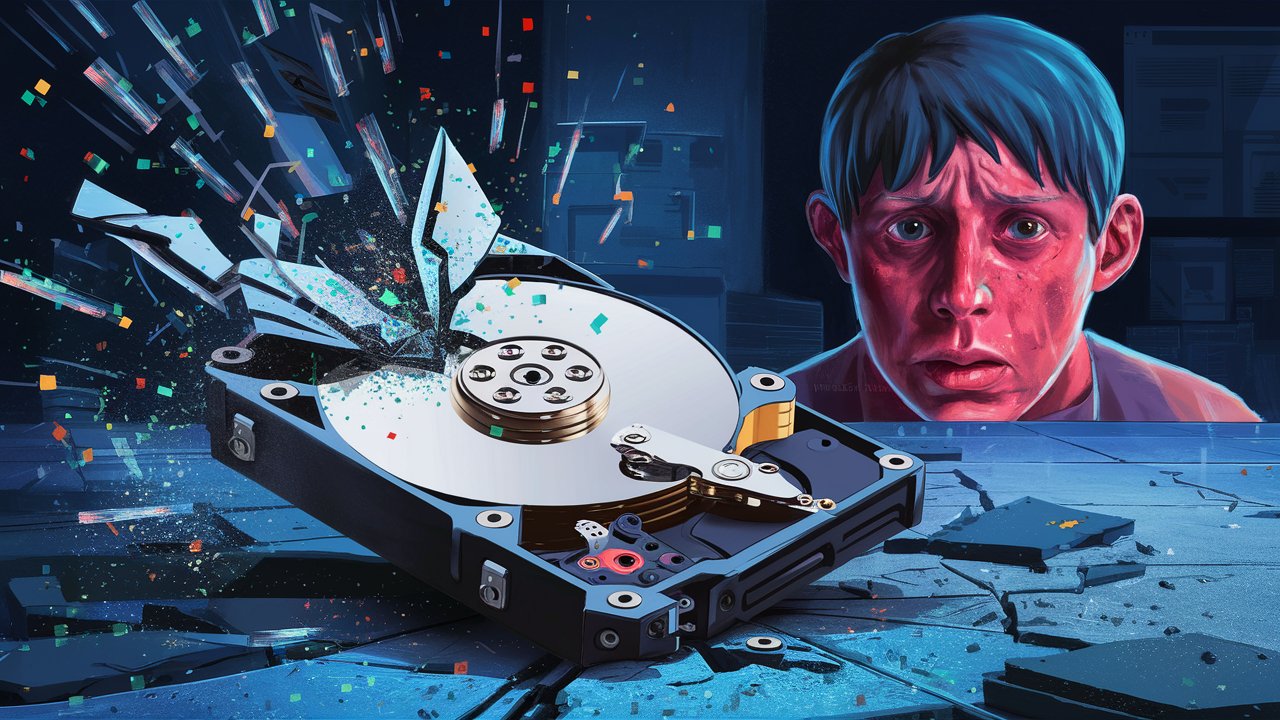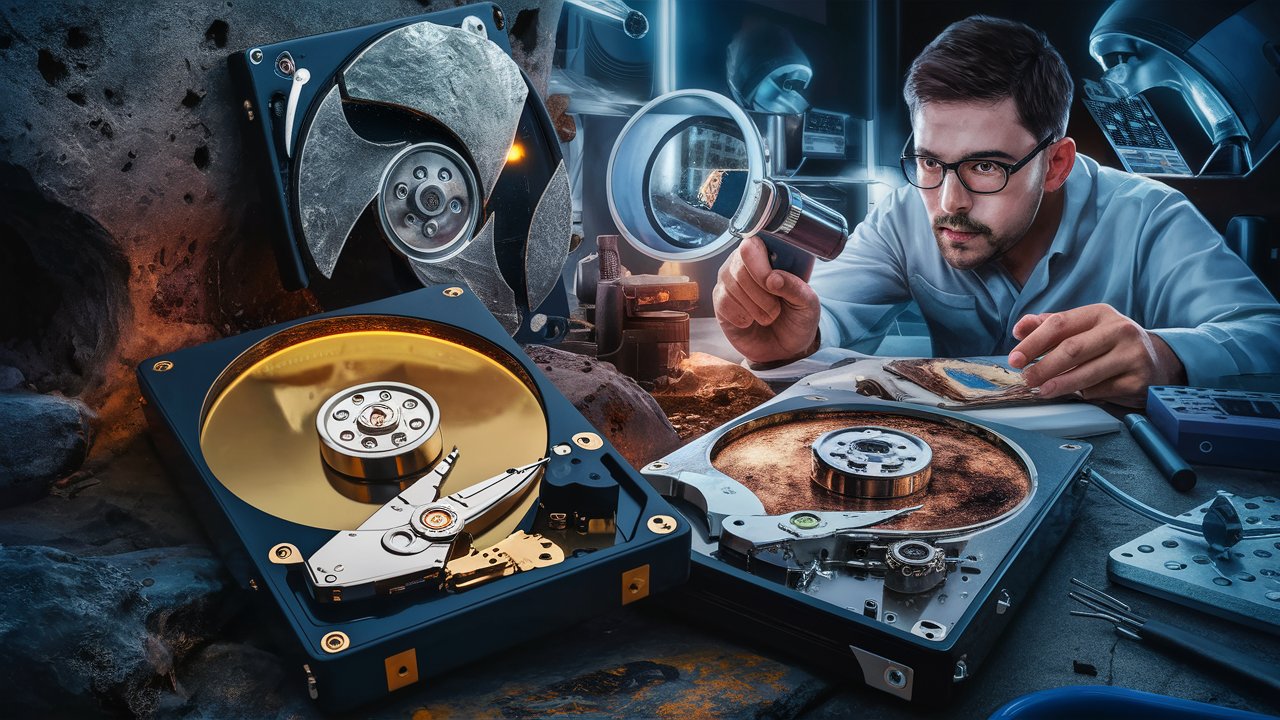Intro
In today's digital age, we rely heavily on our hard drives to store important documents, cherished memories, and essential data. However, one small mishap, such as a drop, can have devastating consequences on the functionality and integrity of our hard drives. The Impact of drops on hard drive data loss is a serious concern that many individuals overlook until it's too late. In this blog post, we will delve into the harsh reality of permanent data loss caused by drops and the long-term consequences it can have on your precious information.

The Shocking Truth About Hard Drive Damage From Drops
Imagine the intricate architecture within your hard drive; it's a marvel of modern engineering, delicately balancing data storage and access. Yet, this complex system is remarkably vulnerable. A drop, seemingly minor in the grand scheme of things, can unleash disastrous forces on these delicate components, fundamentally altering the hard drive's integrity. The consequences of such damage can be subtle initially, only to become apparent over time, as the once smooth operation of your device becomes fraught with glitches, errors, and failures.
This damage stems from the mechanical shock experienced during a drop, which can misalign the read/write heads, scratch the platters, or even disrupt the motor's functionality. These physical damages are not just surface-level issues; they penetrate the core of the hard drive's ability to function, leading to a cascade of problems that compromise data retrieval and storage.
What is perhaps most unsettling is the unpredictable nature of these outcomes. Some hard drives may soldier on for a while, giving a false sense of security, while others may succumb immediately to their injuries. The variance in response underscores the critical need for awareness and preparedness among users to mitigate these risks. Understanding the fragility of our digital repositories and the profound impact a simple drop can have is the first step toward protecting our data against the unforeseen forces that threaten its very existence.

The Immediate Impact of Drops on Hard Drive Functionality
A hard drive's earliest symptoms can appear in several disconcerting ways when it is subjected to the harsh reality of falling. Your hard drive can start making strange noises, which is a surefire sign that something is wrong with its mechanical heart. Or perhaps it labors under the new limitations imposed by the hit, finding it difficult to spin up to its operational speed. In worse cases, it's possible that the hard drive won't turn on at all, leaving you to wonder what will happen to your saved data. These early consequences are the first indications of possibly serious harm caused by the decrease, not just symptoms of discomfort. Every strange sound and glitch in the gadget's operation could indicate deeper, more significant damage to the complex internal design of the device. It's possible that the read/write heads—which are essential for data access and storage—have been directly damaged or misaligned, which has compromised their capacity to operate as intended. The hard drive's physical condition as well as the priceless data it contains depend on this early impact distress stage. It's critical to identify these symptoms as soon as possible and understand their importance. They act as the initial alert, demanding quick attention and action to stop additional harm and protect your digital assets. Recognizing and acting upon these early signs is the first stage in the process of healing and, if possible, repair.

Long-Term Consequences of Hard Drive Damage From Drops
The story of a hard drive's life after impact doesn't end with the immediate aftermath. The effects of a decrease can be felt for a very long time; they can show up as subtle, gradual deterioration that goes unnoticed at first. Initially, the hard disk may appear resilient, functioning as though the dip was only a brief glitch. But beyond this surface, long-term consequences have already begun to develop.
The internal mechanics of the hard drive progressively lose their physical integrity over time. This is a slow erosion of the hard drive's dependability rather than a sudden plunge into malfunction. The disc platters, which were previously immaculate, may now include micro-abrasions, which increases the likelihood of faulty sectors. These sections, which are essentially dead zones, risk the integrity of your data and make some of it corrupt or unusable.
At the same time, corrosion and damage on the mechanical parts—like the actuator arm and spindle motor—occur more quickly. This wear is not consistent and is made worse by the original trauma. As a result, performance problems become unpredictable and may eventually lead to mechanical failure. Till the hard drive hits a critical failure point, this slow degradation is the silent enemy of data preservation.
Vigilance is crucial, as seen by the transition from a seemingly benign decline to a major loss of capability and data. It emphasizes how important it is to keep an eye on the condition of your hard drive and act upon any mild symptoms of deterioration. By doing this, one can protect the longevity of the device as well as the priceless data it contains by navigating the delicate path between a hard drive's resistance and its vulnerability.

Analyzing Data Loss: From Bad Sectors to Mechanical Failures
Understanding the details of data loss from hard drive impacts requires a closer look into the inner workings of our digital storage companions. Bad sectors emerge as silent thieves in the aftermath of a drop, representing portions of the disk that have suffered physical damage and thus lost their ability to reliably store and retrieve data. These are not mere glitches; they are symbolic of deeper, possibly irreversible harm that compromises the integrity of your stored information.
Mechanical failures present a more overt but equally devastating consequence of hard drive impacts. The intricate ballet of moving parts within your hard drive – from the spindle motor that spins the magnetic disks to the actuator arm that reads and writes data – relies on precision. When the harmony of these components is disrupted by a drop, the result can be a mechanical failure that stops the flow of data, effectively locking away your information behind a barrier of broken machinery.
Navigating the landscape of data loss requires an understanding that it is not merely about the absence of information but about the breach in the data’s sanctuary – caused by physical trauma. Each bad sector, every instance of mechanical failure, tells a story of potential moments lost and memories that may never be recovered. In the realm of hard drive impacts, awareness and prompt action can be the difference between temporary inconvenience and permanent loss, guiding us through a delicate balance of preserving our digital legacies.

Navigating the Recovery Process After a Drop
Embarking on the journey to reclaim your data post-impact involves prompt and thoughtful action. The landscape of recovery is subtle, with professional data recovery services standing as beacons of hope in this turbulent time. These specialists harness sophisticated techniques and tools to delve into the damaged realms of your hard drive, aiming to restore what remains of your digital existence. The complexity of this process cannot be overstated, as the success of data recovery is closely to tied to the severity and nature of the damage incurred by the drop.
It's essential to understand that this path is not without its uncertainties. The degree to which data can be retrieved hinges on a myriad of factors, from the physical integrity of the storage medium to the alignment of its internal components. Engaging with professionals at the earliest offers the best chance for recovery, as delay can often intensify the challenges faced during the retrieval process.
In this critical moment, your role shifts to that of an informed participant, providing the necessary context and support for the recovery plan. By choosing to act swiftly and wisely, you engage in a proactive stance against the specter of permanent loss, navigating through the aftermath of an impact with resilience and determination.
Preventative Measures to Protect Your Hard Drive From Drops
Protecting our hard drives from the unforeseen yet not uncommon calamity of a drop requires a conscious and methodical approach. Opting for a robust, shockproof enclosure provides a first line of defense, absorbing the brunt of an impact and reducing the transfer of force to the device within. Additionally, the placement of your hard drive should never be left to chance; ensure it resides in a stable, secure location, far removed from the edges of desks or high-traffic areas where accidents are more likely to occur. Equally critical is the habit of regular data backups. This practice serves as a failsafe, creating duplicates of your invaluable digital content, thereby insulating you against the worst-case scenario of a hard drive failure. Through these deliberate actions, you not only enhance the physical security of your hard drive but also fortify your peace of mind, knowing you've taken tangible steps to mitigate the risks associated with drops. Engaging in these preventative strategies embodies a proactive stance, underscoring your commitment to preserving your digital legacy against the unpredictable challenges of the physical world.